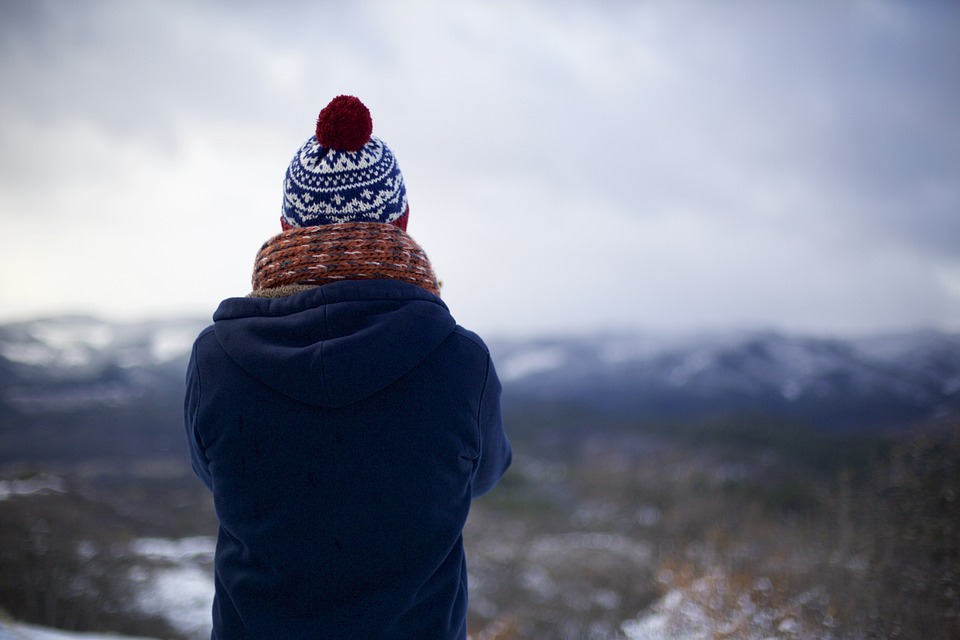 Image via Pixabay
Image via Pixabay
When the clouds roll in and the temperature drops, people often say they can feel it in their body’s aches and pains. Although a precise science behind this common feeling doesn’t exist, several reasons may explain why the body might be in a bit more pain during the fall and winter.
Reasons for the Pain
Increased melatonin, seasonal depression, stiff joint structures, and slow blood circulation may explain the association between cold and pain.
Increased Melatonin
Melatonin is a hormone made by the brain’s pineal gland that helps to regulate your body’s sleep-wake cycle. When the days become darker and shorter, the pineal gland releases melatonin earlier in the evening, which can cause an increase in drowsiness and lethargy. In turn, we may spend longer in bed and less time moving our bodies, making our joints and muscles feel stiff and achy.
Seasonal Depression
With the arrival of winter and the increase in drowsiness comes seasonal depression. Seasonal affective disorder (SAD) is a form of depression that is most prominent in the darker winter months, and is linked to a biochemical imbalance in the brain. Those who suffer from SAD may sleep excessively, feel unmotivated, and eat poorly — all factors that may contribute to physical pain in the body.
Stiff Joint Structures
In cold weather, getting out of bed might make our bodies feel like an old rusty pile of metal scraps or a rickety chair. This stiffness can be attributed to how our joint structures — such as our ligaments, tendons, connective tissue, and muscles — react to the temperature. Depending on the density of these structures, some may be tight and take a bit longer to warm up and loosen than they would in the warmer months, causing strain and tension.
Slow Blood Circulation
When the body is exposed to the cold, it works harder to maintain the heat of the core. This means that extremities, such as hands and feet, experience slower blood circulation and increased nerve pain and inflammation.
How to Help
Activities like taking frequent walks, visiting a sauna, consuming anti-inflammatory foods, and visiting a chiropractic clinic are all things that can help alleviate your pain this fall and winter.
Activity and Exercise
Although you might feel less inspired to get up and go outside when the weather is dark and gloomy, you should still try to be active and get proper exercise this fall and winter. Take advantage of dry days by taking morning or early afternoon walks around the neighborhood when it’s still light out — just make sure to bundle up! Research some stretches to do after you wake up and before bed, or even look into joining a yoga class to keep your muscles loose and the pain at bay. Going on walks will keep your body and mind active, not only helping you feel better physically, but improving your mood as well.
Sauna or Hot Tub
Spending some time in a sauna or hot tub can feel amazing on sore or stiff muscles. The cold outside causes joint structures to stiffen, and immersive heat has been proven to loosen us up and release painful tension — at least temporarily. Heat also increases blood circulation, reducing nerve pain and inflammation.
Anti-Inflammatory Foods
Foods high in sugar, gluten, dairy, and omega-6 fatty acids are all contributors to inflammation. By cutting down your consumption of pro-inflammatory foods and focusing more on a clean diet packed with leafy greens, fruits, and healthy fats, you will feel better in no time. Don’t restrict yourself too harshly, though; you should be able to enjoy the holidays — just in moderation!
Chiropractic Care
We know winter months can be especially hard on your joints and muscles, and we’re here to help. Visit us at Spencer Chiropractic Center for an evaluation to ease your discomfort and learn about how to lessen your pain this fall and winter.
